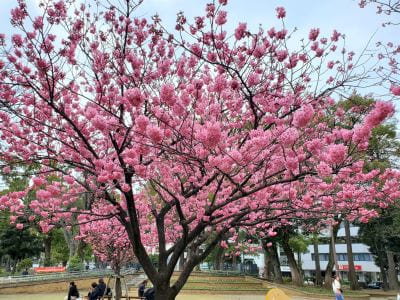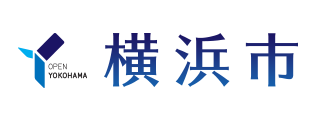- Yokohama-shi Top Page
- Municipal Government Information
- Public Relations, Public Relations, and Public Relations
- Public Relations and Publications
- Public Relations Printed Materials
- Public information Yokohama
- Public information Yokohama-shi version
- Discover Yokohama Aya
- "Yokohama Aya Discovery" series back number (for 2025)
The text is from here.
"Yokohama Aya Discovery" series back number (for 2025)
Last updated on March 1, 2025.
Delivering back issues of "Public Relations Yokohama" serialized on the page

Yokohama with sea, port, greenery, history, region, people and various attractions. "Yokohama Aya Discovery" is a series of colors of this city. Since the January 2023 issue, it has been serialized on the "Public Relations Yokohama" page, and more detailed information has been posted on the website. Here, the past serialization of the paper (2025) is re-posted. In addition, please refer to the link in "More detailed stories" at the bottom right of each month article for the contents of the web.
March 2025 issue Yokohama and Sakura

Yokohama Hisakura in Yokohama Park
Speaking of cherry blossoms, many people think of Yoshino cherry tree.
In Manyoshu, plums were more sung in songs than cherry blossoms. It was only after Kokin Wakashu that many cherry blossoms appeared. Most of the cherry blossoms written around this time are wild cherry tree. Yoshino cherry tree was made by a gardener in Somei Village in Edo (now Komagome, Toshima-ku) at the end of the Edo period. During the post-war reconstruction and high economic growth, it was planted in public places such as parks and streets, and famous cherry blossom spots were born in various places.
Many famous cherry blossom spots have been born in Yokohama. Cherry blossoms along the Kashio River in Totsuka Ward were planted when a broken embankment was repaired at the end of the Edo period, and in the early Showa period, it became one of the most famous cherry blossom spots in the Kanto region that was written by Yosano Tetsumi and Akiko. The cherry blossoms of Ookagawa, which flows through Minami Ward, were planted in the basin of Maita Bridge from Nakazato in the late Meiji era, and became a famous spot for many cherry blossom visitors.
It is said that there are more than 200 horticultural varieties of cherry blossoms, but "Yokohama Hi", named Yokohama, is a variety made by Isao Usui of Yokohama City. Large purple flowers bloom downward and can be seen in Yokohama Park (Naka Ward), Honmoku Sancho Park (Naka Ward), Kishinekoen (Kohoku Ward), etc.
By the way, on Wednesday, March 19, a large-scale event full of flowers and greenery, "Garden Necklace Yokohama 2025", will begin. . Why don't you enjoy a relay of cherry blossoms, tulips, roses and spring clothing along with beautiful harbor scenery and sophisticated cityscapes?
Garden necklace Yokohama 2025 (outside site)
[Period] From Wednesday, March 19 to Sunday, June 15
[Venue] Minato area (around Yokohama Station, Minatomirai / Kannai / Yamate-District), Satoyama Garden (Asahi Ward) and others
[Inquiry] About Garden Necklace Yokohama 2025 Hello Dial: 050-5548-8686 (every day from 9:00 to 20:00, until June 16) Fax: 045-550-4093
Green Environment Bureau Strategic Planning Division Tel: 045-671-2629 Fax: 045-550-4093
The river canal in Yokohama, the city seen in the February 2025 issue photo

Shinkichi Tagawa (After completion of revetment work) Museum of Yokohama Urban History Kura (Photo by Sato)
Kazuki Matsumoto, Researcher, Museum of Yokohama Urban History
In recent years, urban rivers have been attracting attention as a hydrophilic space. In Yokohama, the promenades built on the Ookagawa River (Minami Ward and others) and the Ishizaki River (Nishi Ward) provide a place for people to relax. How did these urban rivers form in Yokohama and what kind of history did they follow? Let's take a look at the Yoshida River and Shinkichi Tagawa, which are now reclaimed and maintained as Odori Park (Naka Minami Ward).
The photo shows Nagashima Bridge in the Shinkichi Tagawa River. ※This is a photo of the 10th century. The Shinkichi Tagawa was excavated in 1896 (Meiji 29). In Yokohama, which has become urbanized on the Meiji period and Yoshidashinden areas, rivers were developed and excavated, forming a river canal network along with the large Okagawa River.
Later, the river canal in Yokohama was damaged by seawalls and bridges due to the Great Kanto Earthquake, and reconstruction work by the government and Yokohama City is underway. It is this photo that conveys the situation. The Nagashima Bridge in the center of the screen is a main pillar with a design designed for reconstruction work. ※You can check 2. The revetment has become a concrete retaining wall, and on both banks, there have been a landing site for boating. The photo shows that the river canal was used as a transportation network.
Later, the Yoshida River and Shinkichi Tagawa were reclaimed by the construction of the Municipal Subway, and the ground was constructed as Odori Park. The Nagashima Bridge also disappears, but the bridge nameplate is still preserved at Isezaki-Chojamachi Station as a relief that conveys traces of the Yoshida River and Shinkichi Tagawa.
※1 Near the middle of the current Isezaki-Chojamachi Station and Bandobashi Station ※Large and thick pillars located at both ends of the two bridges
Exhibition Living in Canals-The River Canal in Yokohama that supported the city (outside site)-(paid)
[Venue] Museum of Yokohama Urban History until Sunday, April 13
Access Get off at Nihon Odori Avenue Station in Minato Mirai Line, just walk
[Inquiry] Museum of Yokohama Urban History (external site) Tel: 045-663-2424 Fax: 045-663-2453
January 2025 issue of Yokohama-Chinatown

Around 1940 (Koto Kaikan Kurakube donated by Yokohama Museum of EurAsian Cultures Collection)
Izumi Ito, Deputy Director of Yokohama Museum of EurAsian Cultures
Yokohama is a gorgeous city where New Year comes twice. New Year's Day and New Year's Day in old calendar. In the old days, the "New Year of the Republic of China" was introduced as one of Yokohama's annual events in Yokohama in 1913 (Daisho 2). Today, the Yokohama Spring Festival is a major event in early spring, held not only in Chinatown but also in Yokohama. In summer there is the Emperor's Birth, which takes place on June 24, old calendar. Guan Emperor's Birth is ritual celebrating the birthday of main deity Guanba of Yokohama's Guanmausoleum. The Yokohama Seki Imperial Mausoleum has a long history, and a small shrine was created shortly after the opening of late Tokugawa shogunate. Since then, overcame the Great Kanto Earthquake, the Great Yokohama Air Raid, and the fire on New Year's Day in 1986 (Showa 61), the 4th Kan Imperial Mausoleum protects the city and people.
A few minutes' walk from Chinatown, Yokohama Museum of EurAsian Cultures is a museum based on the concept of "connecting to the world in Yokohama." In addition to introducing the history and artifacts of various ethnic groups in the Eurasia region, it also introduces the diverse cultures that live in this city, unique to the international city of Yokohama. In the permanent gallery space, the rubbing of Han Dynasty, which is related to wedding costumes of overseas Chinese Yokohama and the gates of the east, west, north and south of Chinatown ※It is also on display. When you come to Yokohama-Chinatown, why not reach Yokohama Museum of EurAsian Cultures?
※Ink is applied to clay roof tile at the eaves, and the engraved pattern is copied on paper.
Yokohama Museum of EurAsian Cultures (paid)
Access Get off at Nihon Odori Avenue Station in Minato Mirai Line. Get off at Kannai Station on the JR and Municipal Subway, a 10-minute walk.
[Closed days] Monday (or the next weekday if it is a national holiday), December 28-January 3, etc.
[Inquiry] Yokohama Museum of EurAsian Cultures (external site) Tel: 045-663-2424 Fax: 045-663-2453
Inquiries to this page
Public Relations Section, Policy Administration Bureau City Promotion Promotion Office
Phone: 045-671-2331
Phone: 045-671-2331
Fax: 045-661-2351
E-Mail address [email protected]
Page ID: 595-312-111







